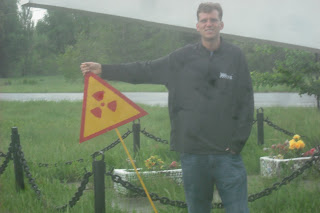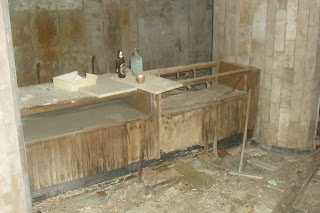If you haven't already, please read Part 1 of this blog post here:
Now, for people still looking to go into the Peace Corps, I
have a few questions for you. First, and most importantly, why did you decide
to go the Peace Corps route as oppose to another program that would give you
more choice? Is there a particular region you’re interested in working in? And
a particular type of work you’re interested in doing? If not, why? If you don’t
have something you already want to do or somewhere you want to work, what are
your expectations of the program and what made you decide to apply?
So, suppose you’re not interested in saving the world, but
you want to join the Peace Corps for your own personal growth. You’re not quite
sure where Khmer is spoken, but you’d learn it if somebody told you to.
Deconstructing the ethics of volunteerism is not something you do on a daily
basis. You don’t have a job, and you’re tired of sitting in your mom’s living
room eating leftovers. Is the Peace Corps really what you want to do?
Perhaps. The program will open you up to all sorts of new
experiences, skills, and travel opportunities. You’ll eat new foods, make new
friends, and learn a new language. For some people, this is just what they
need.
But there are a few things to keep in mind while applying.
A large number of Peace Corps Volunteers (In Ukraine, I
believe around half) are TOEFL Volunteers, teaching English. As a volunteer, I
think this is one of the most effective ways you can work overseas. I’ve heard
many arguments against this, but from my experience in Ukraine, people generally
want to learn English. Knowing the language can open the door to so many
opportunities. As a native English speaker, you are ideal for this position.
Most English teachers in Ukraine are not native English speakers, and some of
them really don’t speak English well. As a result, many people go into the
workforce with an extremely minimal knowledge of the language, and no
opportunity to get a job outside of Ukraine. If you’re a native English
speaker, you can easily work in almost any country you choose. Wherever you go,
there will be some amount of English speakers and some form of English
infrastructure. Try applying to a job in Germany or the United States if you
only speak Macedonian and not a word of English. Try traveling to Indonesia if
you only speak Hungarian. The Hungarian expat community in Southeast Asia is .
. . well . . . maybe “isn’t” is a better word. But I’m going a bit off topic.
So, if teaching English is your thing, the Peace Corps might
be a great option, but is it the only one? Of course not. There are plenty of
other opportunities to teach English abroad that might fit you much better. In
Dnepropetrovsk (where I currently live) there are around 200 English speaking
schools. Most people who work at those schools probably aren’t native speakers,
and would probably love to employ you.
So the difference between teaching English for a private
company and as a Peace Corps volunteer? Working for a company probably pays
pretty well. You might be able to get $10-15 / hour for just talking to people.
It’s really a great option for people interested in teaching. I’ve met a number
of privately contracted English teachers in Ukraine who slowly travel around the
world, getting jobs at different English language schools. I wouldn’t be
surprised to meet somebody who’s lived in 11 countries, traveled to over 100,
spends the majority of their time traveling to interesting places, and has
never had a problem with money. It’s a pretty good set up if you’re interested
in that type of stuff.
If you do this through the Peace Corps, you’ll be living on
the Peace Corps budget. You’re not allowed to work extra hours at a job on the
side, so your only source of income is going to be what Washington DC gives
you. And how much is that? In Ukraine, Volunteers get around $200 each month.
So, suppose you pay around $100 each month for rent. You now have around $3 per
day to pay for all your meals, transportation, and additional activities.
If you know me, you know I’m a fan of traveling on a budget.
But I’m also a fan of working and traveling on a budget. If you work and save
up some money, the money you saved up will go even further if you don’t splurge
on eating out and staying in nice accommodation. If you’re planning on doing
the Peace Corps for the travel opportunities, you need to consider the amount
of money you’ll be traveling on.
So besides money, what are the pros and cons of TOEFL? Well,
if you’re interested in teaching English in Beijing and have no desire to work
on a farm in Nicaragua, then teach English in Beijing. It seems obvious, but if
you do this on your own, you won’t risk being put somewhere you didn’t want to
be. Additionally you won’t have to worry about the ethics of “volunteerism”. Working
as a teacher at a school, you’re certainly not taking away somebody else’s job.
You’re having a positive impact on the people you work with, and opening the
door to many new opportunities. If you’re interested in teaching English, I’d
strongly encourage it. If this isn’t something that interests you, keep in mind
that it’s what you may end up doing as a Volunteer
If you’re planning on applying to the Peace Corps, and doing
it for your own personal growth, there’s one last thing to keep in mind. Do you
care strongly about where you live, geographically? Do you like big cities or
small towns? The Peace Corps is a 27 month commitment, so if you don’t like
where you end up, that can be a very long period of time. If you’re a city
person like myself, you might not be able to put up with a village of 500
people. If you’re more interested in those tiny villages, you might need to get
used to taking a crowded metro to work every morning.
So, from a more self-centered point of view: Is the Peace
Corps a good program?
If you’re looking for that new experience and want to make
some new friends, go for it. You’ll learn a lot and have a lot of fun. You’ll
open yourself up to many different opportunities. If you want to have a say in
exactly where you go or what you do, you should consider working or
volunteering through a different means.
The Peace Corps is certainly not the only program for people to work and
help others overseas. For some people, this might be the best option. For
others, it might not.
So there you have it, my two kopeks on the Peace Corps. To
put things in perspective, two kopeks is worth a bit less than a quarter of a
penny. Therefore, my opinion really doesn’t matter at all in the grand scheme
of things.




























































































































